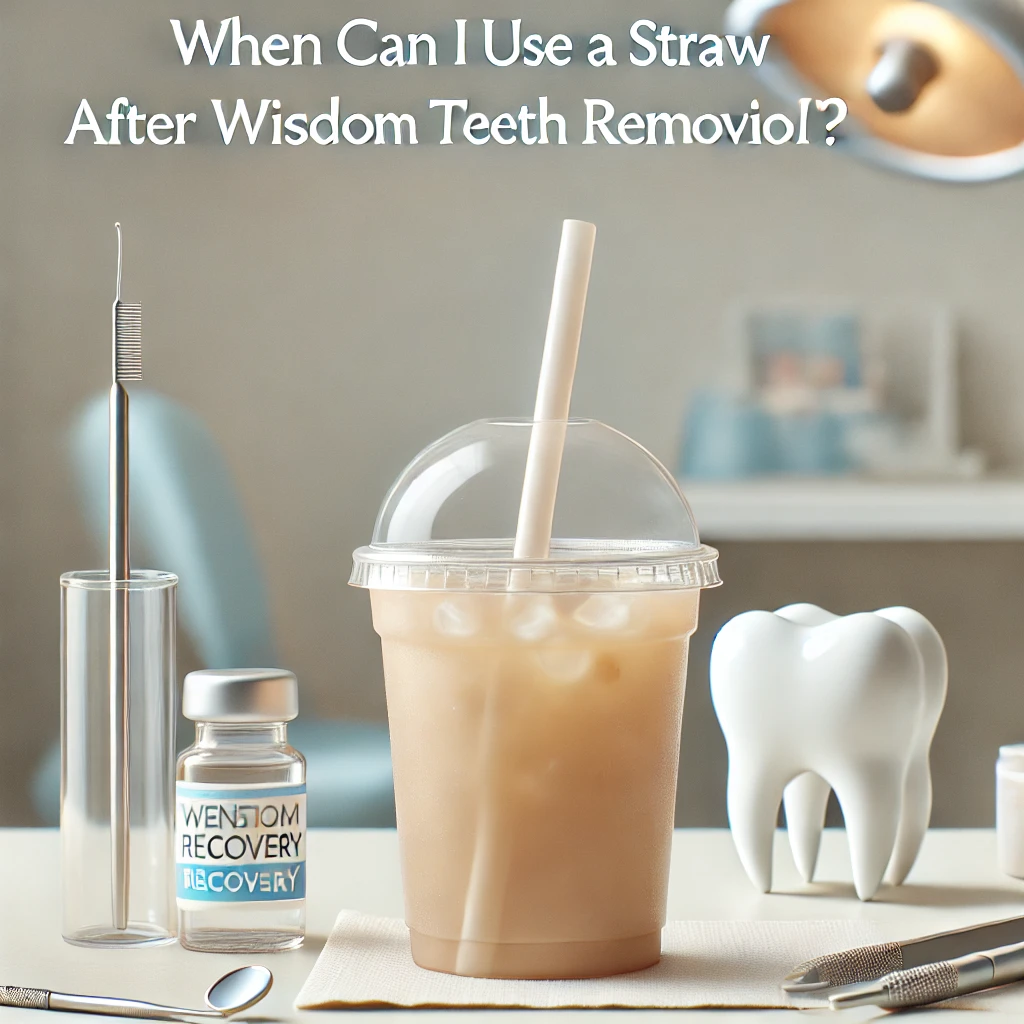After having your wisdom teeth removed, knowing the dos and don’ts during the healing process is essential. One of the most frequently asked questions after the procedure is: when can I use a straw after wisdom teeth removal? This article covers why it’s best to avoid straws post-surgery, the risks involved, and how long you should wait before sipping through a straw again.
Why Should You Avoid Using a Straw After Wisdom Teeth Removal?
Using a straw right after wisdom teeth extraction is generally discouraged, and here’s why:
- Risk of Dry Socket:
When a tooth is removed, a blood clot forms in the empty socket to protect the bone and nerves underneath. The suction force created by drinking through a straw can dislodge this clot, causing a painful condition called a “dry socket.” A dry socket exposes the underlying bone and nerves, leading to intense pain and delaying healing. - Increased Bleeding:
Suction can also lead to bleeding, as it may disturb the area where the tooth was removed. This added pressure can prevent a smooth healing process, requiring longer recovery time and additional care. - Pain and Discomfort:
Apart from the risk of dry socket, drinking through a straw may create unnecessary pressure around the surgical site, leading to discomfort or even pain. This can be avoided by sipping directly from a cup instead.
How Long Should You Avoid Using a Straw?
The standard recommendation for avoiding straws post-surgery is at least 7-10 days after the extraction. However, the specific timeline can vary based on your dentist’s advice and your individual healing progress. Here’s a general timeline to consider:
First 24 Hours
During the first 24 hours, it’s critical to avoid any actions that could disrupt the blood clot. Avoid rinsing your mouth, spitting, or using straws entirely.
2-3 Days Post-Surgery
The risk of dry socket remains high in the first few days, so it’s best to keep all suction-related actions at bay. Stick to a diet of soft foods and avoid any drinks that require straws.
1 Week Post-Surgery
After a week, the extraction site will begin to heal more fully, and the risk of dry socket starts to diminish. Some dentists may advise waiting an extra few days to be absolutely safe.
10 Days to 2 Weeks
By this point, most people have healed enough to resume using a straw without significant risk. However, consult your dentist for the final go-ahead, as everyone’s healing rate varies.
What Happens If You Accidentally Use a Straw After Wisdom Teeth Removal?
If you accidentally sip through a straw in the first few days post-surgery, it doesn’t necessarily mean you’ll develop a dry socket, but it does increase the risk. Here’s what you should do if this happens:
- Stop Immediately: Put the straw down and avoid further suction.
- Rinse Gently (After 24 Hours): If it’s been more than 24 hours since the extraction, rinse gently with warm salt water to clean the area.
- Monitor for Symptoms: Watch for signs of dry socket, such as increased pain, an unpleasant taste in your mouth, or visible bone at the extraction site.
If you experience any of these symptoms, contact your dentist as soon as possible.
Tips for Drinking Without a Straw After Wisdom Teeth Removal
Even if you’re accustomed to using straws, there are plenty of alternative ways to drink without one, ensuring a smooth recovery.
- Use a Cup or Mug: Sipping directly from a cup is an easy way to stay hydrated without creating suction.
- Use a Spoon: For thicker liquids like smoothies, consider using a spoon instead of a straw.
- Tilt Your Cup: If tilting your head or cup feels uncomfortable, try leaning forward and bringing the cup to your mouth at a comfortable angle.
- Avoid Carbonated Drinks: Carbonated drinks can also disrupt the blood clot and may cause discomfort. Stick to still, room-temperature drinks during the first week.
Safe Recovery Tips for Wisdom Teeth Removal
In addition to avoiding straws, these tips can help ensure a quick and safe recovery:
1. Stick to Soft Foods
Eat soft foods that don’t require chewing. Some good options include applesauce, yogurt, and mashed potatoes. Avoid crunchy, spicy, or hot foods, which can irritate the extraction site.
2. Rinse with Salt Water
After the first 24 hours, rinse your mouth gently with warm salt water a few times daily. This helps to keep the area clean and reduce the risk of infection.
3. Avoid Smoking
Just like straws, smoking can create suction that dislodges the blood clot. Additionally, the chemicals in cigarettes can delay healing and increase the risk of complications.
4. Apply Ice Packs
Using ice packs on your cheeks in the first 48 hours after surgery can help reduce swelling and discomfort. Apply the ice in intervals, 15 minutes on and 15 minutes off.
Also read: How Bad Is Wisdom Teeth Removal Without Anesthesia
FAQs About Using a Straw After Wisdom Teeth Removal
1. Can I use a straw 1 week after wisdom teeth removal?
Typically, it’s best to wait 7-10 days before using a straw. However, if you’re unsure, consult with your dentist to see if it’s safe to resume.
2. What happens if I use a straw too soon after extraction?
Using a straw too early can increase the risk of dry socket by dislodging the blood clot. This condition is painful and can significantly delay healing.
3. Can I use a straw with a lid to avoid suction?
Even with a lid, using a straw creates suction. It’s best to avoid straws entirely until your dentist confirms that it’s safe.
4. How soon can I drink cold beverages after wisdom teeth removal?
You can drink cool or lukewarm water after the first few hours. However, avoid extreme cold or hot temperatures, which can irritate the extraction site.
5. When can I start drinking smoothies with a straw after wisdom teeth extraction?
It’s best to avoid smoothies with a straw for the first week. Try drinking them with a spoon or directly from the cup instead.
Conclusion
Knowing when to use a straw after wisdom teeth removal is crucial for preventing complications and ensuring a speedy recovery. Avoiding straws, especially in the first 7-10 days, reduces the risk of dry socket and other post-extraction issues. Always consult your dentist for specific guidance based on your individual recovery progress, and follow the tips provided here to aid in a smooth and pain-free healing process.
Disclaimer: The content on Wellness Derive is for informational purposes only and not a substitute for professional medical advice, diagnosis, or treatment. Always consult a healthcare provider for medical concerns.



